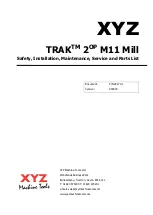
230
Local IP/network
Viewed from the perspective of the selected interface, you can enter a local
address here. This corresponds to the source IP of outbound packets (before
SNAT) and the destination IP of inbound packets (before DNAT).
When SNAT or DNAT is involved, restricting a priority rule
to specific local IPs usually requires two rules to catch both,
in- and outbound packets: For inbound packets you would
enter a SX-GATE IP, for outbound packets the internal IP
(of the LAN client or the server addressed with DNAT).
Direction
Decide in which direction the port signature of the selected protocol has to be
applied. Let's take the HTTP protocol as an example. The arrow "-->" means
the HTTP port 80 is on the external side. So outbound bandwidth management
will process packets to port 80, inbound bandwidth management packets from
port 80. With "-->" you will get the opposite: Packets to port 80 are processed by
inbound, packets from port 80 by outbound bandwidth management. The double
arrow "
↔
" combines both directions.
External IP/network
Viewed from the perspective of the selected interface, you can enter a remote
address here. This corresponds to the destination IP of outbound packets and the
source IP of inbound packets.
Priority
Select the priority for matching packets.
14.1.2.2-F
Info
Description
This field serves for documentation only.
Содержание SX-GATE
Страница 1: ...State 2016 12 13 V7 0 2 0 User Guide ...
Страница 92: ...12 1 Setup 92 There s no way to restore a purchased certificate without backup ...
Страница 126: ...12 3 3 Groups 126 12 3 3 C Usage This table show in which settings the definition is used ...
Страница 476: ...15 3 Apple iPhone 476 ...
















































